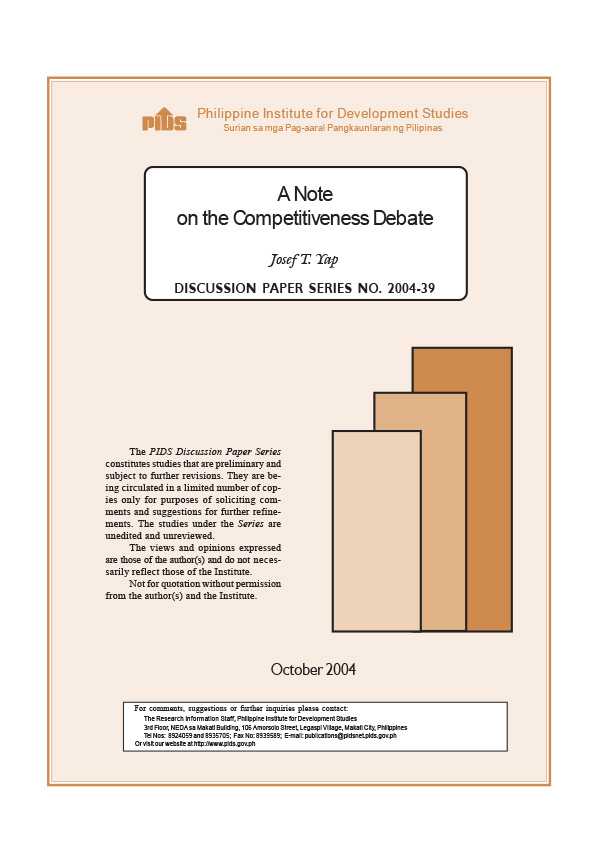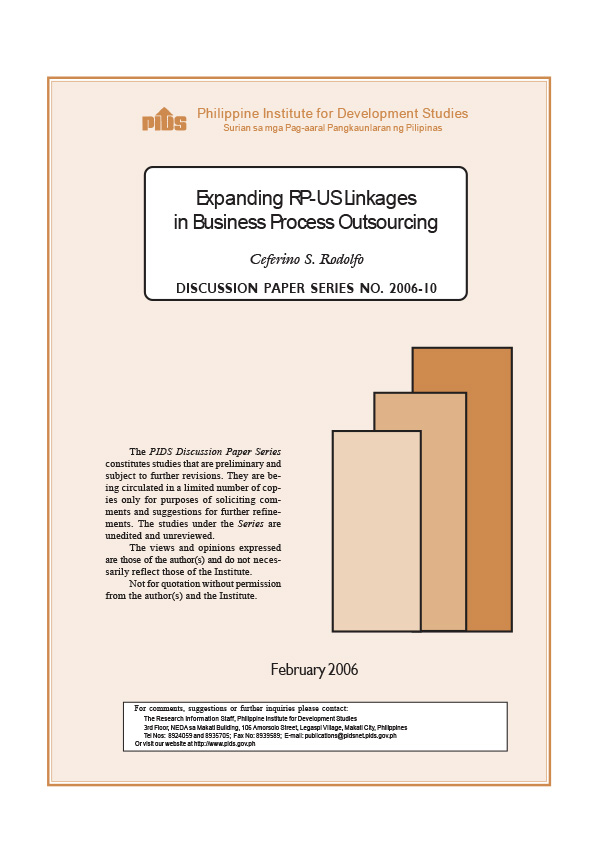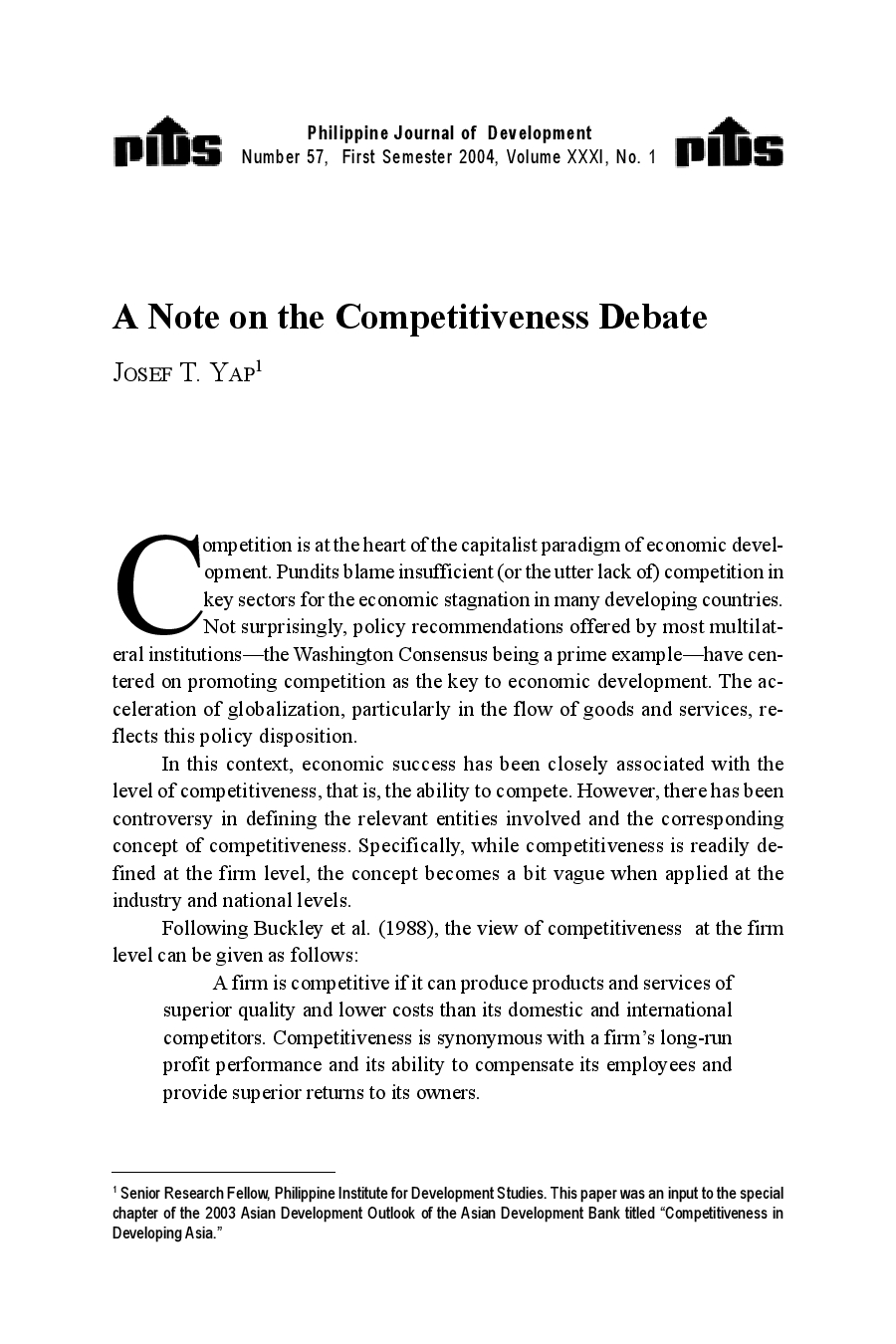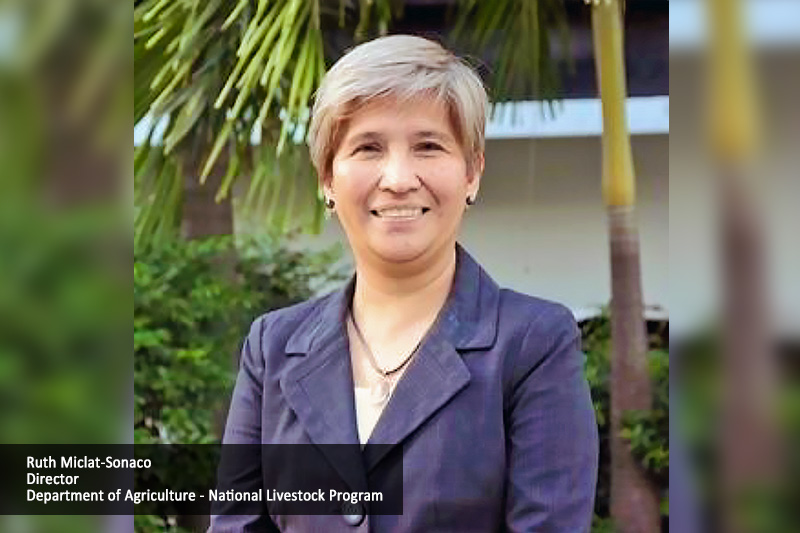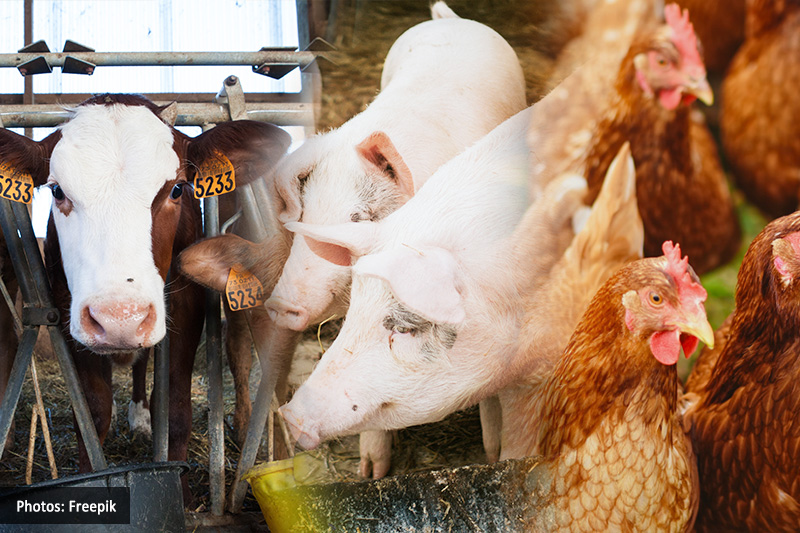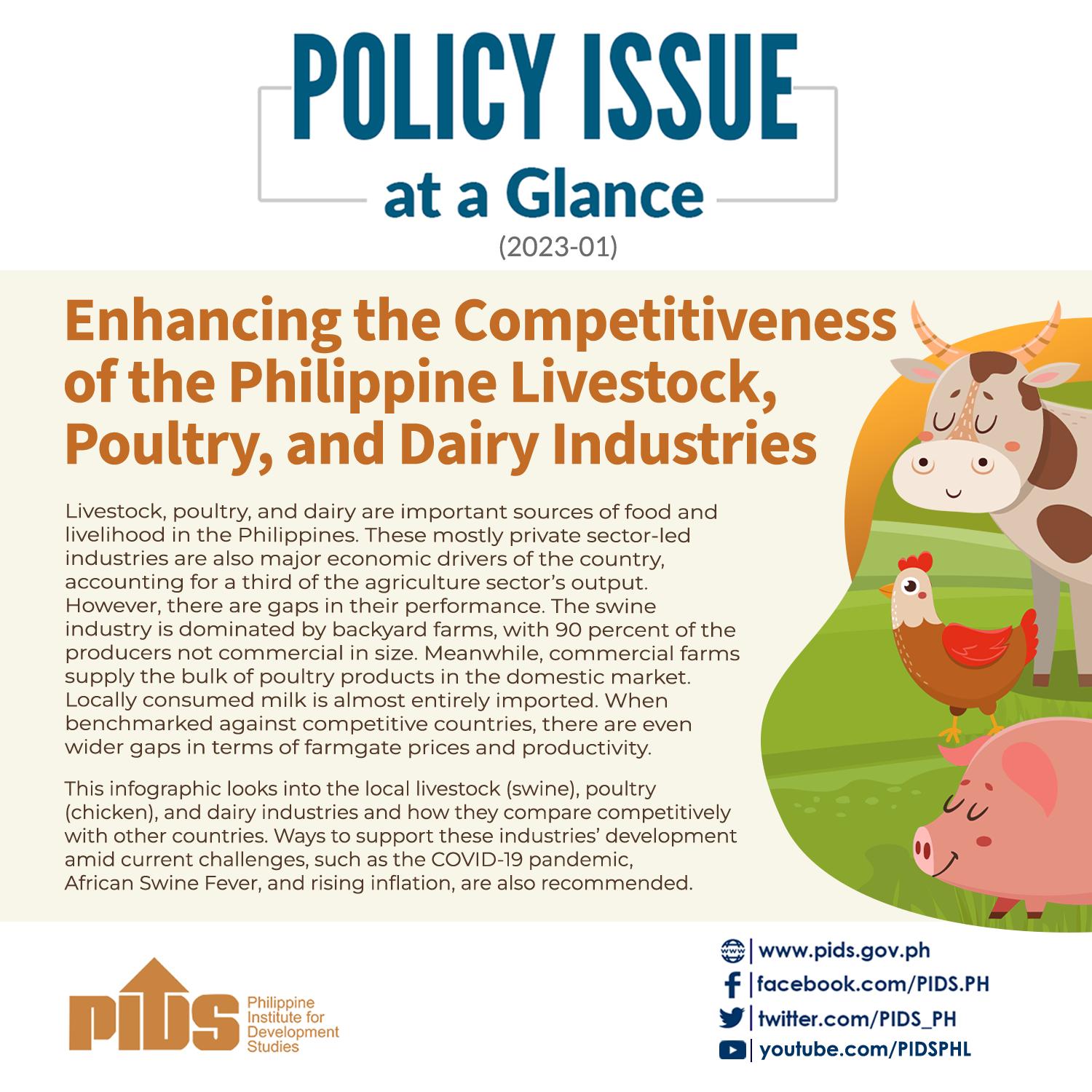Competitiveness is technically a firm level concept. However, it is oftentimes extended to the national level--the idea of a country's 'international competitiveness' with the following analogies: market share-->export share of country; price-->real effective exchange rate or unit labor cost; profitability-->long-run economic growth. The concept of national competitiveness is faulty, in the words of Paul Krugman it has become a 'dangerous obsession.' However, national or government policies do have an impact on firm level competitiveness. The only concept related to firm level competitiveness that can be extended to the national level without ambiguity is technological capability. Meanwhile, the Global Competitiveness Report (GCR) presents two measures of national competitiveness: the Global Competitiveness Index (GCI) and the Current Competitiveness index (CCI). The GCI is simply a measure of a country's potential for economic growth which is not equivalent to competitiveness. The CCI is an exercise in tautology. It simply shows that countries with a higher level of development are 'more competitive.' The issue of the appropriate development policies is not addressed. Since technological capability is at the heart of competitiveness, countries must address this issue squarely. One course of action is to adopt a strategic approach to foreign direct investment--as opposed to a passive strategy--similar to what Malaysia and Singapore did.
Citations
This publication has been cited 6 times
- CEPAL. 2009. Economic survey of the Caribbean 2008-2009. Sede Subregional de la CEPAL para el Caribe (Estudios e Investigaciones) 38689. Naciones Unidas Comisión Económica para América Latina y el Caribe (CEPAL).
- Felipe, Jesus. 2009. A cautionary note on the interpretation of unit labor costs as an indicator of competitiveness, with reference to the Philippines. Philippine Journal of Development PJD, 34, no. 2. Philippine Institute for Development Studies.
- Jambor, A., A.T. Toth, and D. Koroshegyi. 2018. Competitiveness in the trade of spices: A global evidence. 2018 Conference, July 28-August 2, 2018, Vancouver, British Columbia 277195. International Association of Agricultural Economists.
- Jámbor, Attila, Andrea Tímea Tóth, and Domonkos Kőröshegyi. 2017. Az agrárexport versenyképessége - a nemzetközi fűszer-kereskedelem esete [Export competitiveness in agriculture: the case of the international spice trade]. Közgazdasági Szemle (Economic Review - monthly of the Hungarian Academy of Sciences), 0, no. 11, 1202-1223. Közgazdasági Szemle Alapítvány (Economic Review Foundation).
- Kapitsinis, Nikolaos and Theodore Metaxas. 2012. Territorial Competition: Theories, arguments, policies and lessons of the last 25 years. ERSA conference papers ersa12p947. European Regional Science Association.
- Mejía Cubillos, Javier. 2013. Perfil económico del Eje Cafetero. Un análisis con miras a la competitividad territorial [Economic profile of Eje Cafetero. An analysis towards territorial competitiveness]. MPRA Paper 43873. University Library of Munich, Germany.

